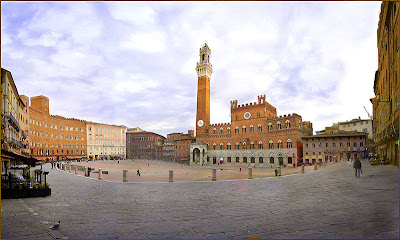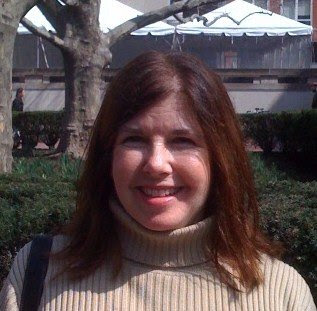Constantine:
It is essential that we deal with this Arian heresy.
Ossius:
Yes, his ideas are dangerous. Arius preaches that Jesus is our brother— that we are all brothers.
Constantine:
Exactly! If Jesus is not Divine, on what basis do we owe him allegiance? If all men are brothers, on what basis do they owe ME allegiance? Anarchy- that’s the result of his ideas. The very integrity of the Empire is at stake.
Ossius:
I agree. We need hierarchy to maintain order. An ox will submit to his yoke, if he knows who's in command-- and if there’s a dog beneath him can kick.
Recitative:
Ossius:
Things are not always
as they seem.
The DREAM was
full fraternity;
But the folly
of that ideal
has only now
become too clear.
Constantine:
We’re...
too disorganized.
It would be
totally...
impracticable.
The need...
is for
Order.
Ossius:
With recognition--
The Church has responsibilities
for Stewardship of resources.
We cannot afford
to squander Authority.
Hierarchy enhances Power--
Power for the
Greater Good.
Duet:
Would that it were different.
The Situation’s changed.
Constantine: TRUTH is an ABSOLUTE
Ossius: (Though in practice it is not.)
Constantine: Truths, perhaps, are relative.
Ossius: (Indeed, some can be bought.)
Constantine: POWER is a process.
Ossius: (A means for good or ill.)
Constantine: UNITY is our purpose
Ossius: (Meaning submission to HIS will.)
Constantine: UNITY of EMPIRE
already is achieved.
Ossius: UNITY of FAMILY --
substantially, believed.
DUET: UNITY of FAITH
is the matter here at hand.
Without IT, all may crumble...
to blow away like sand.
UNITY, UNITY!
(C): One EMPIRE, (O): One EMPEROR!
(C): One FAMILY, (O ): One FAITH!
Duet: Our DREAM is Salvation (Subjugation)
for the whole Human Race.
Constantine:
Good friend, I would like you to chair this Council on my behalf.
It is of utmost import that we reach consenus. Above all--Unity.
Constantine puts on his crown and an elaborate robe and leads Ossius to the main stage set up for the Council.
Soldiers with swords drawn flank the entrance for the procession of Bishops.
At the beginning of that scene, each of the two main characters has already accomplished most of his principal goals. Constantine has absolute power in a unified empire (after his son, Crispus, had won a great naval victory in the Hellespont, where he defeated the superior fleet of Licinius, Augustus in the East). Ossius is a bishop in a recognized and powerfully established Christian Church. But here is the fatal flaw— hubris. Constantine’s quest for Unity had three elements: Empire, Family and Faith. As Ralph Waldo Emerson said: “A foolish consistency is the hobgoblin of little minds.” The operative word is foolish. Consistency in itself may be a noble goal; but the word ‘foolish’ implies an unreasonable consistency. By imposing conformity at the Council of Nicaea and excommunicating those with whom they disagreed – by being exclusionary with people and texts – Constantine and the Church cut themselves off from collective wisdom. Selecting four Gospels may appear to be balanced; but prohibiting other writings is a foolish consistency. Arius may indeed have been a heretic and worthy of excommunication. It is clear to me, however, that the Church has not had a monopoly of those seeking truth. Further, it appears that some of the most profound thinkers have been rejected and persecuted by institutions. The classic example is Jesus.
In the play, the character Arius is one of my heroes. His view is that Jesus is a great man, and not a deity. His song is one of the few that I chose to write in a regular –almost sing-song – rhyme scheme… largely because the historical Arius was known to preach in such a style. I called Arius’ piece “Heretic’s Song.”
(Dennis didn’t like that title and preferred the first line “Jesus is our Brother” and thought the theology expressed in the lyrics was actually fairly mainstream. I’m not so sure. In any case, as he lay dying, Dennis asked me to play Robby’s song— and along with the Bach unaccompanied 'cello suites— was one of the last things he heard. Dennis also requested that my recording be played during communion at his funeral at Grace Cathedral. The sound person at the Cathedral, however, got a mixed signal and didn’t play the CD at the right time. I had to get up and go back to the sound booth more than halfway down the nave to ask her to begin. But it probably turned out for the best, since then there wasn’t the clicking sound of high heels and shuffling of feet during communion).
Jesus is our Brother
He teaches us the way
To reach our heavenly Father
By learning how to pray.
Note well, he says OUR Father
Not merely his own.
To be a model for us mortals
What good is a God alone.
Oh yes, Jesus is our Brother,
Jesus is our Brother,
Jesus is our Brother
But more than this
Jesus is our Friend!
Jesus is our pastor
A shepherd to his flock.
Not only is he master
But paschal lamb; take stock
Of what he offers
A means so we’ll atone—
Be one with God creator
Round an inward heavenly throne
For the kingdom is within you
The kingdom is within you
The kingdom is WITHIN YOU
And through the end
Jesus is our Friend.
Our Brother Jesus
Is our Friend!
The tragedy for Constantine in terms of the play is that by insisting on complete unity in matters of faith, he depends more completely on Ossius’ corrupted, incomplete wisdom. Arius is truer to the ideals expressed by the younger Ossius in his song “Blessed are the Poor” but Arius is excommunicated and his writings banned. So complete unity of faith leads eventually to disunity of family and the tragic execution of Crispus. Therefore, the Fausta/Crispus story in part four is a necessary dramatic consequence to the scene at the Council of Nicaea.
The main external villains are the anti-Christian Emperor Maxentius, defeated by Constantine at the Battle of the Milvian Bridge, and his sister Fausta – Constantine’s second wife – who plots the downfall of Crispus, Constantine’s heroic, virtuous son. The Crispus/Fausta story is based on legend. What is clear is that Constantine ordered the execution of both. For my play, I chose to adapt a variation of the Greek myth about Hippolytus & Phaedra, that is: the virtuous son, who rebuffs the sexual advances of his step-mother, and is then jealously accused by her of rape. Constantine learns the truth too late, after his son is already executed on his command. Fausta is then crushed beneath shields as in Richard Strauss’ opera based on Oscar Wilde’s Salome.
No doubt one of the most controversial elements of this play is my choice of Sophia as the name of the third part of the Trinity. It may sound like New Age or feminist jargon. I believe, however, it is correct historically that it was not until the latter part of the Fourth Century (two generations later than the events of the play) with the translation of the Bible and liturgy from Greek to Latin by St. Jerome that spiritus sanctus acquired its masculine character. In Greek, Hebrew, Arabic, and other Middle Eastern languages, the equivalent word is feminine. Hagia Sophia, Justinian’s great church is Constantinople, does not mean Saint Sophia, but Holy Wisdom. And so I have used the names Holy Wisdom and Sophia interchangeably as the third part of the Trinity, which gives a rather Zen-like balance to the concept.
The play ends as it began— with Constantine’s baptism on his deathbed. In death Constantine is finally reconciled to his executed son, Crispus. The anachronistic, bejeweled Byzantine angel from the vision the night before the Battle of the Milvian Bridge returns and stands in benediction above a kneeling Constantine and Crispus to form a visual tableau of reconciled Unity—a Father, Son and Holy Wisdom.
Chi-Rho image: gbgm-umc.org





















